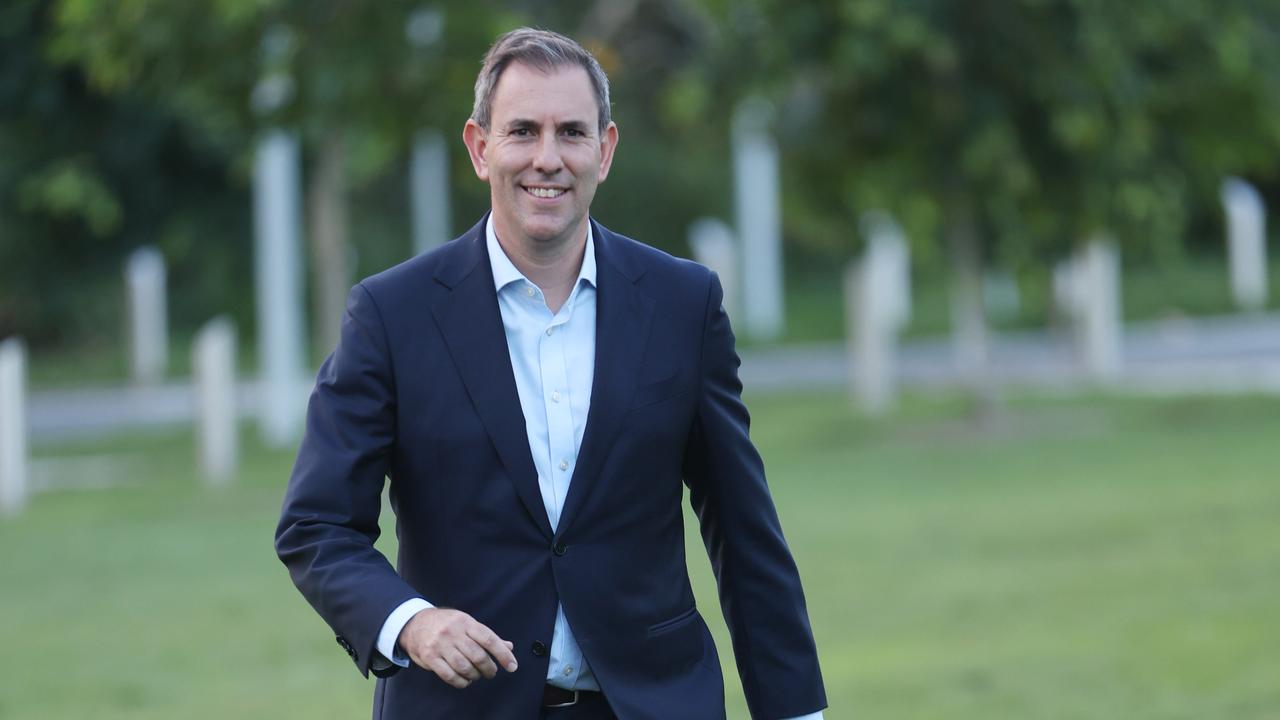NAB to slash 6000 jobs despite bumper $6.6bn profit
NAB plans to axe 6000 workers over three years, or about one-fifth of the bank’s workforce.

National Australia Bank chief executive Andrew Thorburn says the lender has to “get angry about costs in a sustainable way” as he reveals plans to axe 6000 workers over three years, or about one-fifth of the bank’s workforce.
The shock plan to automate away frontline staff and roles within the bank came as the lender handed down a bumper $6.64 billion annual cash profit, which was up 2.5 per cent over the year to the end of September.
“What we’re doing is we’re simplifying the bank,” Mr Thorburn said yesterday. “And as we simplify, we automate processes and things move to digital channels. We will need less people.”
The overhaul will also see the bank hire about 2000 new employees, though it is unlikely many of the redundant workers will be redeployed and NAB has established a redundancy program so retrenched workers can access support and training for up to six months after leaving the company.
“We’re hiring 2000 people with different capabilities: data scientists, AI, robotics, automation, technology people — digital people,” Mr Thorburn said.
The 6000 workers represent about 18 per cent of the bank’s 33,400-strong workforce. NAB is planning to cut $1bn in costs from the bank by 2020 as it refocuses its operations on business lending and simplifies its product range.
The restructure will cost the bank up to $800 million, mainly in redundancy costs.
The bank in recent years has stripped back its operations as Australia’s largest banks tried to rid themselves of troublesome wealth management arms in favour of highly profitable mortgage and business lending and deposits. NAB spun off its Clydesdale Bank in Britain last year, following the sale of most of its life insurance business to Japan’s Nippon Life.
NAB is already Australia’s largest business bank, with a 22 per cent share of the market. It controls about a third of all small and medium business loans, and a third of agriculture lending. Although Mr Thorburn said the bank wanted to become the “most respected” business bank, he declined to specify a revenue target for the lender.
“We are very confident that there will be more revenue growth and more market-share gains and better retention as part of our longer-term plan,” he said.
NAB’s profit was aided by a solid 2.7 per cent lift in housing and business lending over the year, and a better result in its markets and treasury arm. Earnings in the consumer banking and wealth arm rose 4.3 per cent to $1.6bn, while business bank earnings increased 6.3 per cent to $2.8bn.
But investors sold down NAB shares on the threat of greater than expected restructuring costs.
Macquarie analyst German Victor said it was “a broadly neutral result” with “solid underlying trends being offset by additional expenses”. UBS analyst Jonathan Mott said while the bank expected greater expenses to be offset by stronger revenue, shareholders may be sceptical of promises of revenue “until there are signs of delivery”.
“Wealth performance was soft, and expenses were higher than expected, but lending, both mortgages and to businesses, supported the results,” Digital Finance Analytics principal Martin North said.
NAB’s cash return on equity — a key measure of profitability — was 14 per cent, down 30 basis points on last year. Mr Thorburn said the bank was hoping to lead its other big four rivals in return on equity in the near future.
CLSA analyst Brian Johnson questioned why the number of staff to be sacked hadn’t been finalised but the bank was still booking the impairment charge over the next six months.
“Execution hasn’t been great at NAB over the past 25 years,” Mr Johnson said. “Smart CEOs under-promise and over-achieve,” he said.
Mr Thorburn said the bank had “to get more angry about costs in a sustainable way”. “We do need a step change,” he said.
NAB will now pour an extra $1.5bn into an overhaul targeting “innovation and capabilities” in its lending operations as it targets a 50 per cent reduction in the number of products it offers.
It will also cut the number of IT applications by it uses by 20 per cent. The new investment spending would see costs grow by between 5 per cent and 8 per cent in the full 2018 financial year, but expenses growth is forecast to be flat thereafter.
“The bank’s going to be a completely different place in terms of ease and simplicity,” Mr Thorburn said.
As part of the NAB overhaul, current chief of the bank’s New Zealand division Anthony Healy will swap roles with Angela Mentis, head of the business and private banking arm.
NAB will pay a final dividend of 99c, with its full-year payout steady at $1.98 per share. The bank will pay out $5.3bn in dividends this year.




To join the conversation, please log in. Don't have an account? Register
Join the conversation, you are commenting as Logout